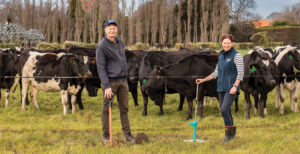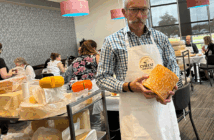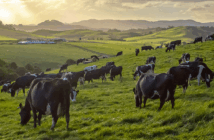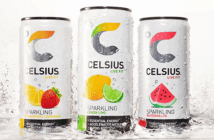
Over the period of one-year New Zealand sends 2.2 million tonnes of untreated industrial food processing biowaste to the landfill.
Now a project, spearheaded by University of Canterbury’s Environmental Science Professor Brett Robinson and in collaboration with scientists at Manaaki Whenua Landcare Research, Plant and Food Research and Lincoln University, is aiming to turn biological waste products into new products.
Biowaste costs the country $270 million per year and results in the equivalent of 8 million tonnes of carbon dioxide annually says Robinson.
Transforming this biowaste into high-value products, such as soil conditioners and nutritionally balanced animal feeds, would help reduce New Zealand’s carbon emissions and bring economic and environmental benefits.
“We want to create economic and environmental value from biowastes by ensuring the nutrients they contain are harnessed to improve our soils and feed our animals rather than degrading our waterways and contaminating soil,” Robinson says.
“Our overarching goal is to reuse and recycle our waste, helping to make our agricultural economy more circular and our food production more sustainable in the long-term.”
The project team plans to develop new microbiological (using bacteria and fungi) treatments that can be used to turn waste products such as grape marc – stalks and skins that are a by-product of wine production – into balanced animal feed that improves animal health and wellbeing.
Artificial intelligence methods would be used to select which microbes can transform specific biowastes efficiently.
“Manaaki Whenua has a collection of 20,000 organisms called the International Microorganism Collection, from plants. These microbes, or mixes of these microbes, can transform this waste into something we can use in our agricultural systems.
“For example, grape marc which is rather unpalatable to animals, could be made more appealing to cattle and therefore included as cattle fodder. The challenge is that it’s impossible to test all 20,000 microbes because we don’t have time. So, we are looking at a smart way of selecting these microbes using machine learning.”
New Zealand’s milk processing industry produces nearly 800,000 tonnes of solid biowaste and 190 billion litres of liquid effluent annually. Robinson says bioreactors at milk processing plants could transform this waste into a valuable soil conditioner instead of it being disposed of on nearby land.
Potato waste is also an issue with 30% of potatoes going to waste, when the peel, slivers and rejects have potential to be transformed into useful animal fodder. The seafood, meat and horticulture industries also produce significant waste streams.
Robinson says providing locally sourced animal feed and soil conditioners would make New Zealand more self-sufficient, and would increase soil carbon, reducing the need for expensive fertilisers.
“This research is a critical part of New Zealand’s agricultural future as we face increasing competition from countries who are producing synthetic meat and milk. We need to show that we can produce high quality meat and milk in a sustainable, clean environment.
“We want to work with farmers to find the best outcome for both our economy and the environment and we’re engaging with the industry to find the best solution.”
Mātauranga Māori (Māori knowledge) will feed into the research which should help prevent contamination of waterways and mahinga kai (food gathering) areas.
“We plan to co-develop our research with biowaste producers, end-users and Māori entities – including Māori businesses, iwi and hapu,” Robinson says.




























































































